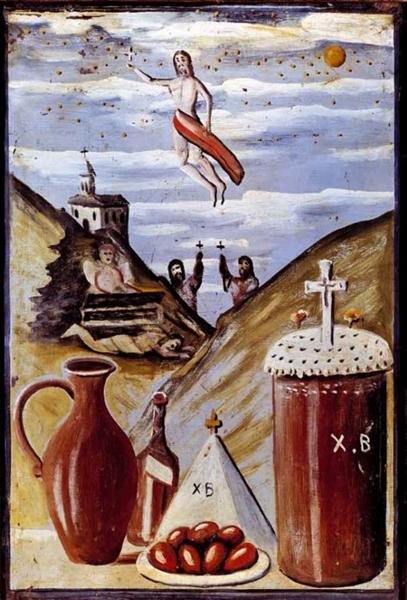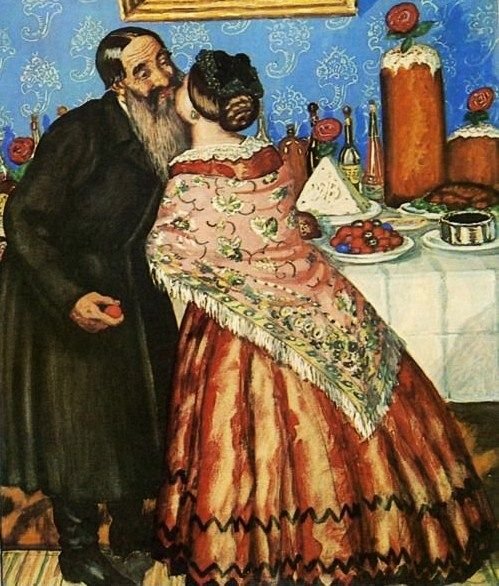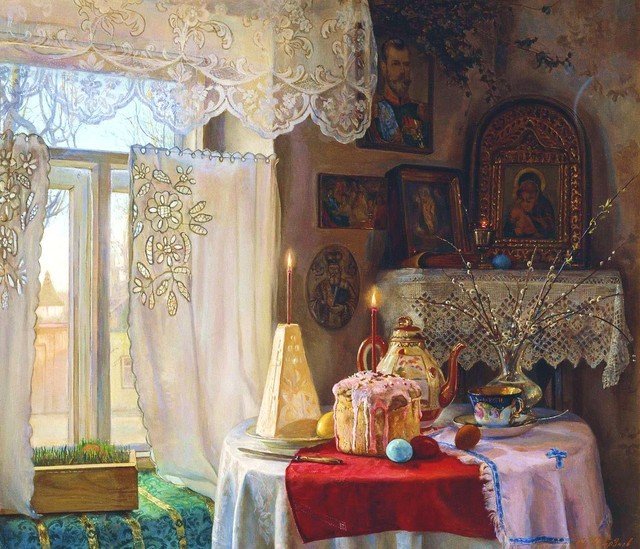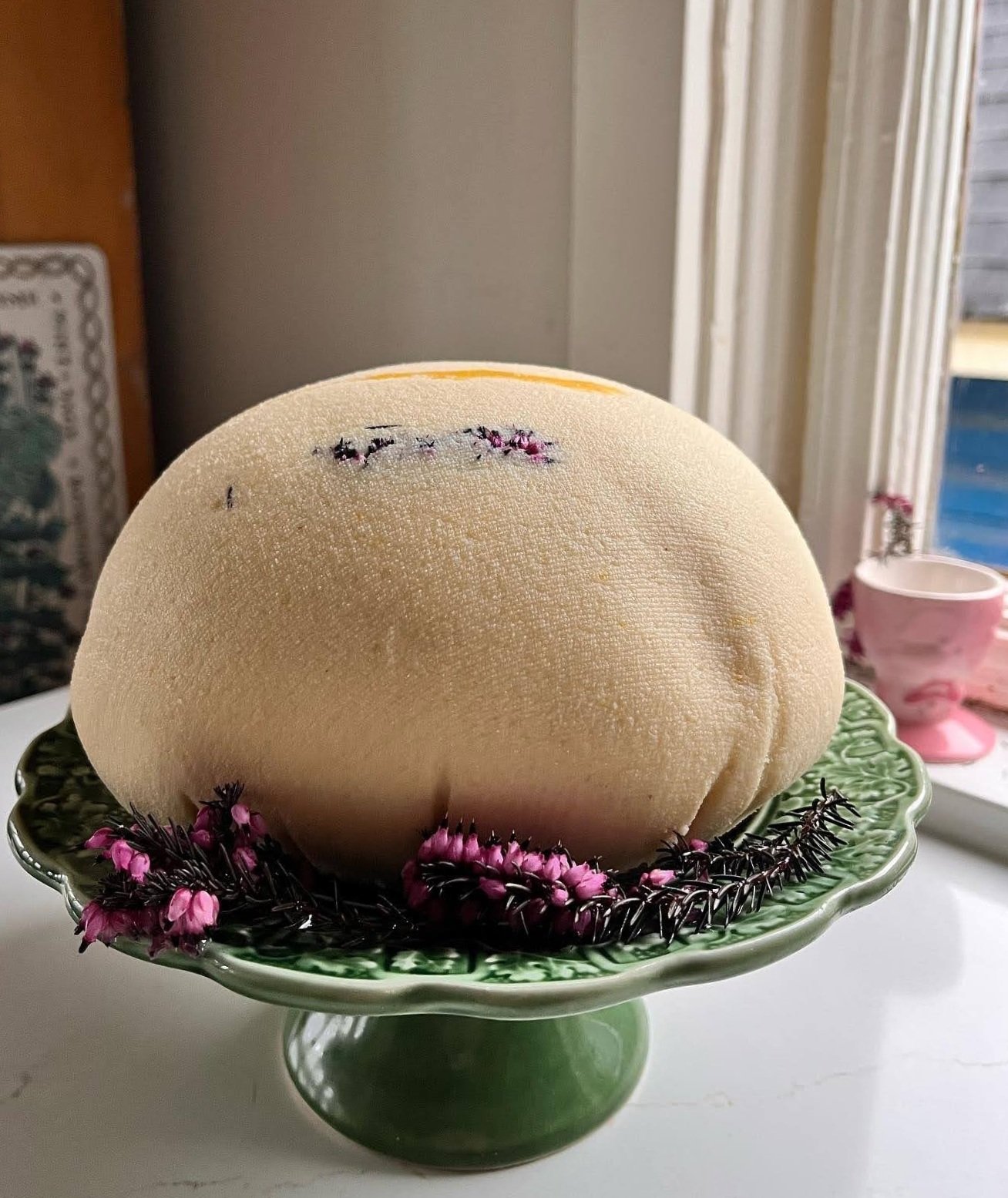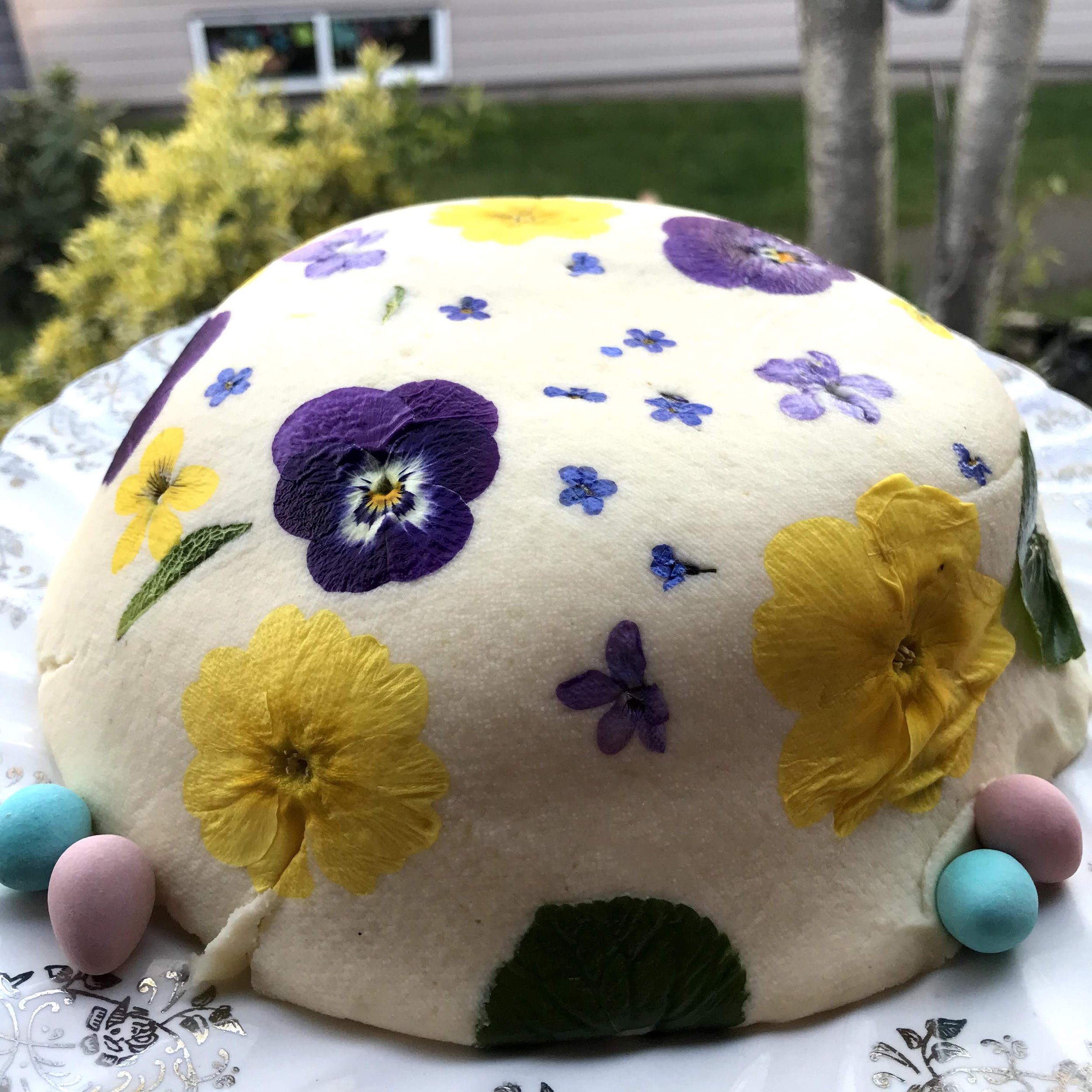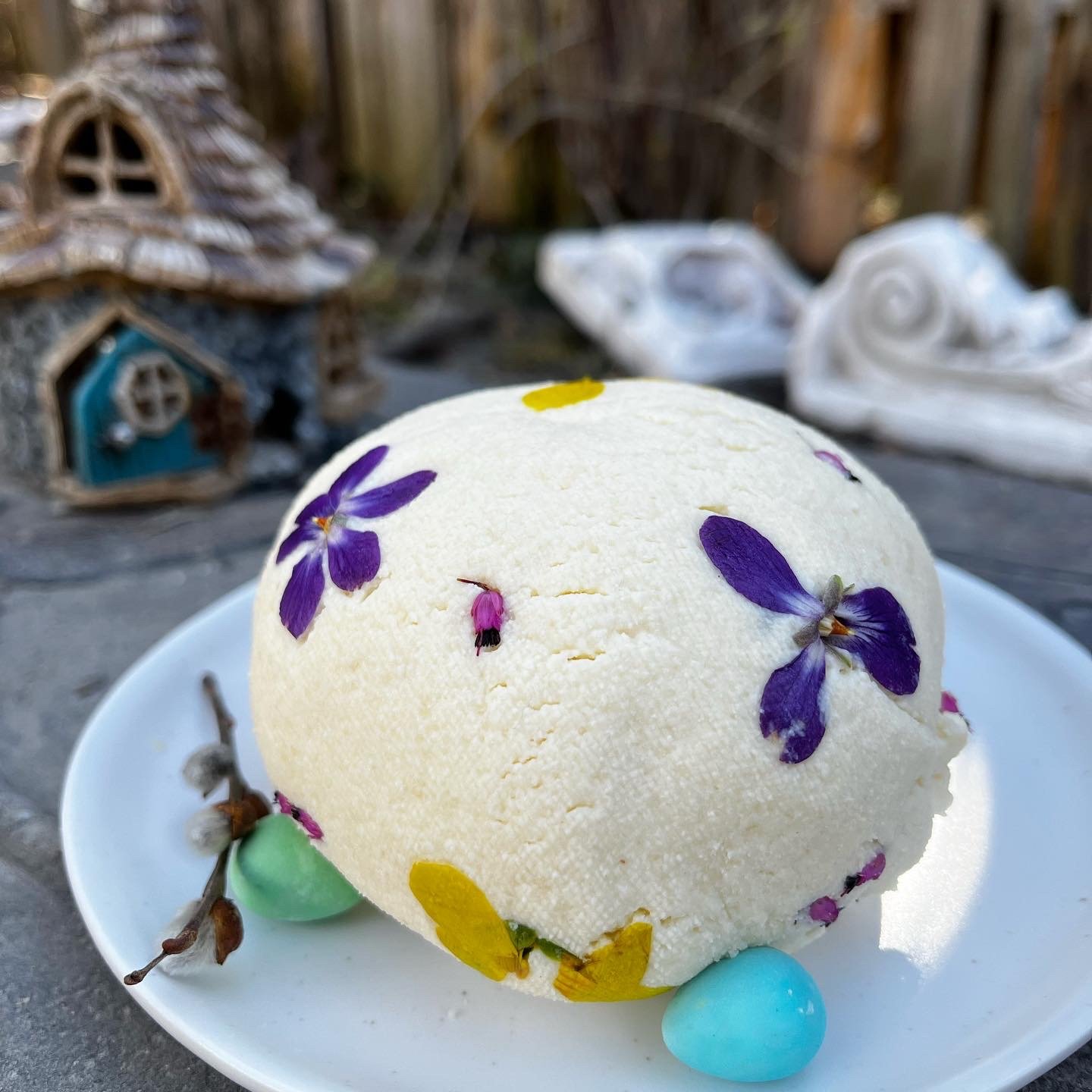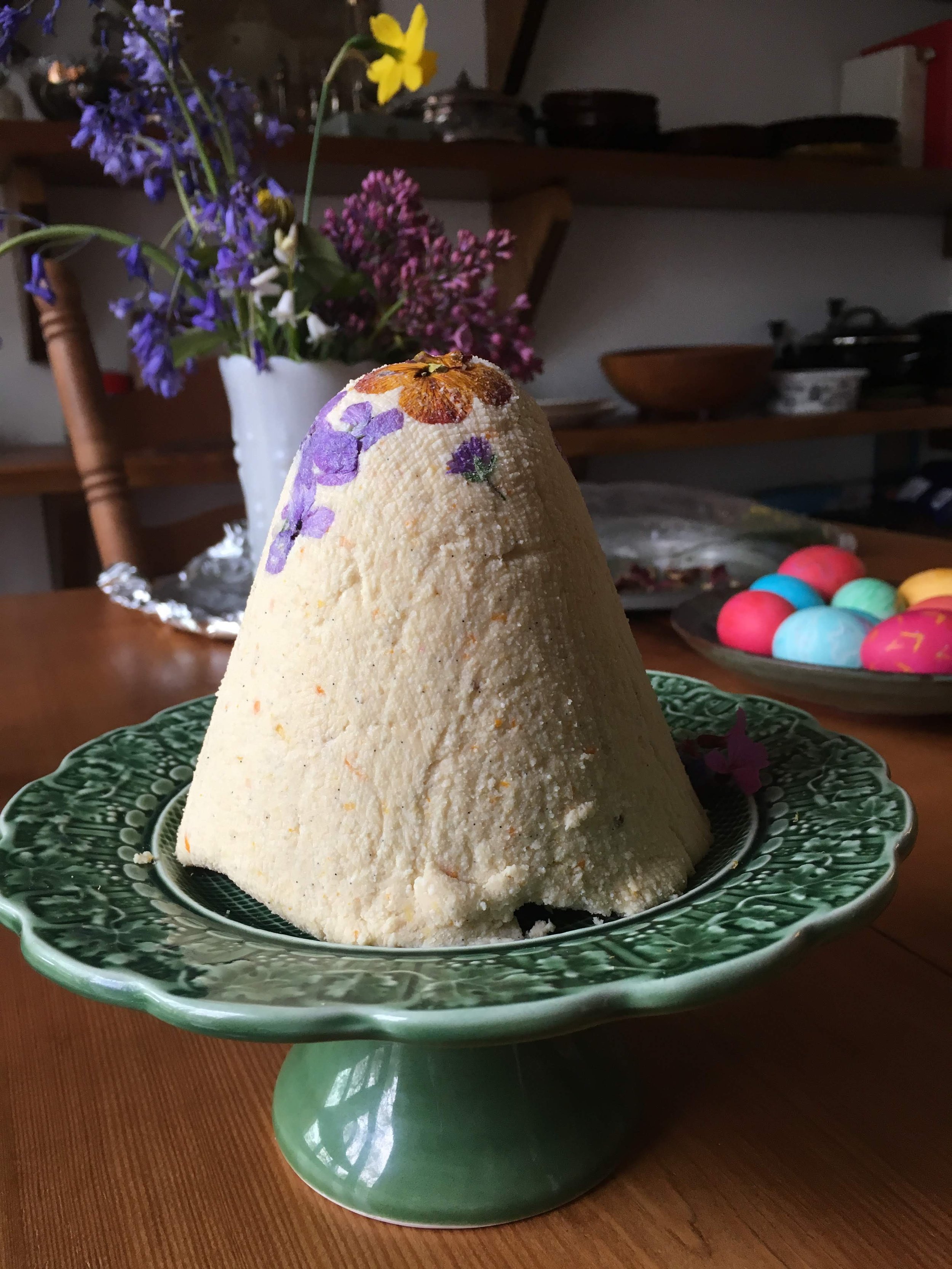Sigrid's Paskha
In the Eastern Orthodox tradition, paskha or pascha is a holy dish served as part of the Russian Easter Resurrection Feast. It’s traditionally made in a wooden pyramid-shaped mold that represents either the first Passover in Egypt or the Tomb of Christ. Made with snowy fresh cheese to represent the purity of the Paschal Lamb and studded with dried fruit to form religious motifs, it’s as rich in symbolism as it is in dairy, almonds and sugar
I was introduced to paskha by my husband’s family. His oma, Sigrid, lived in Russia as a girl and clearly knew a good thing when she tasted it. Her version is simple and all the more wonderful for it. No dried fruit or fancy mold, just cheese, nuts, eggs, cream, sugar, vanilla and lemon hung in cheesecloth or a flour sack for several days. Similar to cheesecake, but more delicately flavoured and less cheesy, it’s almost a pudding—but denser. You can spread it on toasted Easter bread or eat it with a spoon. And I think it gets tastier the longer it sits. Sigrid made hers with cottage cheese, breaking up the curds by pushing them through a sieve. I prefer to make it with quark for its mild flavour and smoother texture. that doesn’t require a food mill (fewer things to wash!). My favourite part of making paskha is lining the cheesecloth or flour sack (I like a flour sack) with fresh edible blossoms that get pressed into the top surface. I can't imagine Easter without it. You can also divide this recipe into smaller gift-sized paskha to give to friends. It’s very rich and a little goes a long way.
Recipe
materials
cheesecloth or flour sack
large heavy-bottomed pot
ice
whisk
sieve
ingredients
2 x 500 gram tubs full fat quark or full fat cottage cheese
1.5 cups (300 grams) finely ground almonds (almond meal)
3 eggs, room temp
1.5 cups (340 grams) unsalted butter
710 ml whipping cream
1.5 cups (300 grams) white sugar
Zest of 1-2 lemons (to your taste)
1 package of vanilla sugar or vanilla bean, scraped.
method
2 X 500G TUBS FULL FAT QUARK OR FULL FAT COTTAGE CHEESE
If you’re using cottage cheese, you’ll need to process it first by either pushing it through a fine sieve with the back of a wooden spoon (Sigrid’s method) or use a food mill to make quicker/more consistent work of it. I much prefer the lighter, slightly tart quark, but if you can’t find it, cottage cheese works great.
Zest of 1-2 lemons + 300 grams sugar
Zest lemon or lemons into the sugar and rub the mixture between your fingers to release the citrus oils. Set aside.
Place a large sieve over a deep bowl. Boil water and wet the cheesecloth or flour sack. Ring out the cloth (you want it damp, but not wet) and use it to line the sieve, leaving a good amount hanging over the bowl. You’ll need three layers if you’re using cheesecloth, one layer with a flour sack. I prefer the flour sack because I can wash and reuse it. Plus, I don’t have to fiddle with multiple layers of fabric. If you’d like to have pressed flowers atop your paskha, place edible blossoms in the bottom of the cheesecloth. Now that I no longer live on the coast, spring blossoms come later, so I use lemon peel and heather, sometimes violets, if I’m lucky. Basically, whatever’s colourful, blooming and edible.
Fill your sink or a basin with ice and enough water to come halfway up from the bottom of your pot. You’ll immerse the cooked mixture into the ice water to stop the cooking process.
2x 500 ml quark, 710 ml cream, 340 g butter, lemon sugar, 3 eggs
Place the processed cottage cheese or quark, cream, butter and lemon sugar in a heavy bottomed pot and heat on low/medium heat, whisking continuously. Before the mixture gets too hot (not so hot to cook an egg), whisk in eggs one at a time, mixing well between each addition.
300 grams ground almonds + 1 package vanilla sugar
Still whisking, allow the mixture to heat to just below boiling —look for little bubbles forming around the outer edge of the mixture. Remove from heat and whisk in the ground almonds and vanilla sugar.
Once everything’s well blended with no clumps of almond, immerse the pot in ice water and continue stirring until the mixture returns to room temperature. I like to switch to a wooden custard spoon at this point. It’s absolutely not necessary—whisking is totally fine. However, I have a sentimental attachment to my custard spoon and I use it for all sweet celebratory foods. Don’t be tempted to skip this bit. The long whisking or stirring creates a smooth result and imbues a bit of ritual into the final result. Yes, you can taste ritual.
Hot paskha mixture is placed in a basin or in the sink filled with ice and water to cool.
Pour the room temperature mixture into the sieve and let it drain for a bit. Once a bit of liquid has drained into the bowl beneath, you can gather the cheesecloth up and make a ball with the mixture in the bottom. Tie the cheesecloth with string or use a elastic and hang it some place cool for several days. This is how Sigrid did it, hanging the bundle of paskha somewhere cool and allowing it to drip into a bowl below.
I prefer to leave the paskha in the sieve. After a couple of hours, I fold the cheesecloth over the top to keep it from drying out and allow it to drain overnight. The next day, I pop a heavy rock (one I use specifically for paskha) on top of the cheesecloth top to speed up the draining—mine is always ready to go in three days. Depending where you are and what you have available, you can allow the paskha to drain in a cool cupboard, pantry or in the fridge. I’ve hung my paskah outside in a cold cupboard, but now that I live in colder climes, I wrap it—bowl, sieve and paskah in plastic bag and pop it in the fridge. Just make sure you’re not letting your paskha drain near onions or other smelly fridge things.
Check the bowl under the paskha daily and remove the sweet whey to use in crepes or smoothies.
After three days, your paskha should feel firm to the touch. Feel free to help it along and squeeze the cheesecloth to extract more liquid. At this point, even though I use a sieve, I remove the stone and gather my paskha into a ball, and squeeze before unwrapping and plating. I love how the paskha looks when it’s in a smooth ball. If you prefer an equally lovely domed mound, simply open the cloth and place a plate over the paskha and flip it over. If you used edible flowers, the top of your paskha will feature the loveliest pressed pattern. If you skipped that step, you can still decorate with fresh edible flowers or chocolate eggs. Whatever you fancy. Note: you can play with texture—if you like a creamier texture unwrap earlier in the process or leave it to drain longer for a firmer paskha.
Paskhas of Yore
On the west coast, spring blossoms are plentiful. So, when I lived there, I made the most of them. You can see the different shapes and sizes. Some years, I made one large paskha and others I divided the mix to make two or three smaller ones. Once, I used my potato ricer instead of sieve to get more of a traditional pyramid shape. Really, it’s a very forgiving recipe and you should feel free to experiment with the design, spices or different citrus zests.
